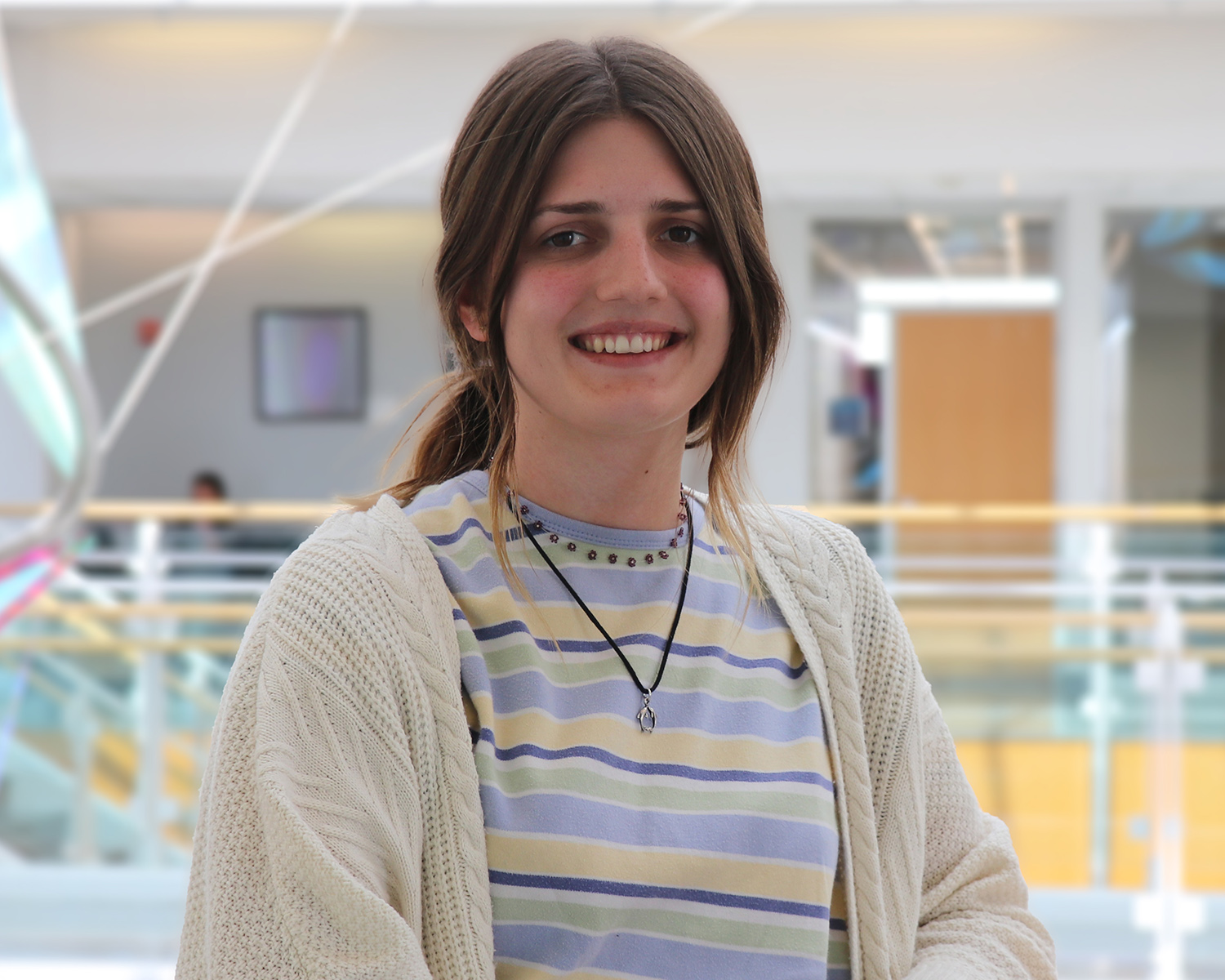Research Models of DBS: Fruit flies
Research Models of DBS: Fruit flies
There are few things Elizabeth King likes more than biting into a fresh, warm peach from the tree in her back yard. But she’s not out there enjoying them alone. As anyone who has let a banana over-ripen on the countertop knows, fruit flies love to congregate around fruit. An overlooked peach that has fallen to the ground is even better. Unlike King, fruit flies are looking for more than just a free meal. Decaying fruit is great pick-up joint for flies looking to find a mate and settle down.
“Once they’ve mated, female fruit flies will lay their eggs inside the fruit’s rotting flesh. The larvae will hatch out of those eggs, and they’ll crawl around in the goo and eat and get bigger and bigger. Eventually, they’ll pupate and emerge as adult flies, and the cycle will start all over again,” says King, who uses fruit flies in her lab in DBS.
To paraphrase the age-old question: Which came first, the fly or the egg? For King, the answer is simple: neither.
“For me, the question came first, and then the study organism second,” she says. “I had a scientific question I wanted to answer and then I looked for the organism that was going to let me best answer that question.”
How does diet influence an organism’s lifespan and reproduction? That’s one of the questions that King asks. The answer, she hopes, will one day lead to a better understanding of the link between diet and human health and longevity. The fruit fly is a great organism to answer this question for many reasons, she says.
First, the lifespan of fruit flies can vary. The fly that lands on the peach in her front yard during the heat of August will live for about 10 to 14 days. In her laboratory, where the environmental conditions can be tightly controlled, flies can live up to two months. How long a fruit fly can live often comes as quite a surprise to King’s students. “They come in the lab thinking flies only live for a day,” she says. “It’s probably the biggest misconception most people have about fruit flies.”
Nevertheless, 2 months is pretty short. This brevity is a particular advantage for King, since she looks at genomic-level changes over many generations of fruit flies.
Since she is especially interested in how a fly’s diet influences those genomic changes, it also helps that fruit flies are simple to keep in the lab. “They’re pretty easy to rear in the lab, but there are still always challenges, right? Anytime you work with an organism, you get to know their idiosyncrasies: what they like, what they don’t like, recurring problems that come up, and so on,” says King, who learned fly husbandry techniques while a postdoc. “Over the years, I would say I’ve learned how to make them happy.”
One could also say they are the “bee’s knees” or, I should say, the fly’s knees for genetic research. For King, a quantitative geneticist who is studying complex questions requiring large-scale experiments, fruit flies are “hard to beat.”
“They have these small genomes, so you can sequence them really cheaply,” she says. “I am a quantitative geneticist, which means I’m trying to understand pretty complex stuff and that often requires doing large-scale experiments. With flies, we can have a bunch of different genotypes that we can look at for these large experiments. So, really, they are the perfect organism for a lot of the questions I want to answer.”
But not every question, she clarifies. King also is interested in how other environmental factors influence longevity. Studying flies outside the lab is not as straightforward.
“They’re actually not a very good ecological system because they’re tiny and they fly, so they’re very difficult to study unrestricted in their natural environment. You pretty much have to confine them, even if you’re working outside,” she explains, adding that there is much we don’t know about wild populations of fruit flies.
At first glance, fruit flies may seem like an unlikely model for humans, but King says the biological systems are comparable between the two species. Moreover, because the fruit fly’s entire genome has been mapped, researchers can narrow down effects of specific genes. Understanding these effects in flies, she says, can provide insights into how these systems work in humans.
“One of the things that we try to show with our experiments is the hierarchy of traits that contribute to a phenotype, which is characteristic of a lot of human traits and human diseases as well,” she explains. “We’re really interested in trying to figure out ways to model these trait hierarchies in flies so that we can then apply what we learn to understand those kinds of traits in humans.”
The contributions of fruit flies extend beyond the scientific realm. Like other insects, they can provide valuable services to an ecosystem, such as food for other organisms. “Flies are also involved in the decomposition cycle, like when they take advantage of the fruit decomposing on my lawn,” King says.
Still, King says it’s always an uphill battle trying to convince people that fruit flies are fascinating. Luckily, she has a trick up her sleeve for reluctant converts.
“I love to stick my arm in a cage with 2000 fruit flies in it. It feels like all these little whispers on your hand,” she says with a grin, adding, “C’mon, embrace your inner fly. I’ll go get a cage to put your hand in.”
